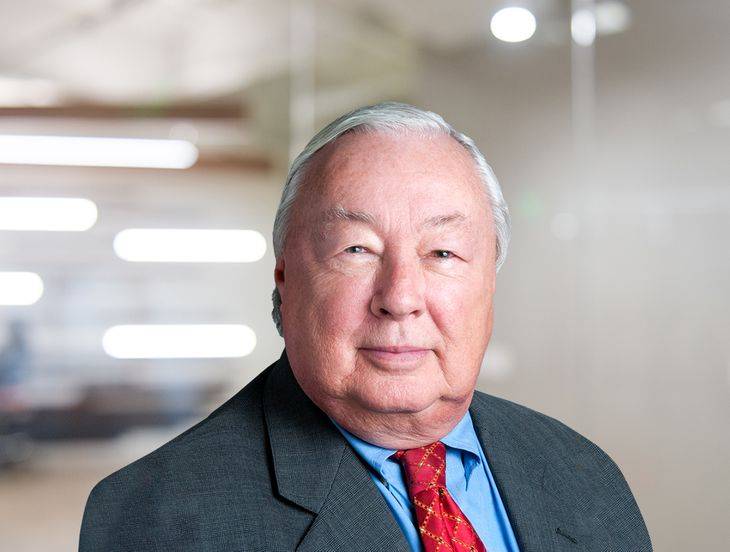Mixed News for Employers as PBGC Releases Multiemployer Bailout Plan Rule
Insights
7.16.21
The federal agency overseeing voluntary private defined benefit pension plans just issued its Interim Final Rule on how withdrawal liability will be impacted by the billions of dollars that will be paid to failing multiemployer pension plans to keep them afloat through 2051. The Pension Benefit Guaranty Corporation’s (PGBC’s) July 12 announcement will impact what happens as a result of the estimated $94 billion it expects to be used as part of the latest bailout. What do employers need to know about this latest development?
Overview of Rule: Good News, Bad News
As expected, there is no change for employers who have previously withdrawn from these plans, or who will be withdrawing in 2021. Withdrawal liability remains as assessed. For those employers thinking about withdrawing in the future the news is mixed, although PBGC made it very clear that any forthcoming “special financial assistance” (“SFA” in PBGC jargon – or “bailout money” to the rest of the world) is “not intended to reduce withdrawal liability or to make it easier for employers to withdraw.” The good news is that SFA will be counted as plan assets when determining a plan’s unfunded vested benefit liability, which is basically the underfunding assessed against employers as withdrawal liability. This means that the billions going to the plans will be considered in determining withdrawal liability. For example, if a plan receives SFA in fiscal year 2022, withdrawals in fiscal year 2023 will take these amounts into account. This factor will clearly reduce future withdrawal liability calculations as plan assets increase.
Unfortunately, the rest of the news is bad. PBGC also mandated that unfunded vested benefit liability calculations after receipt of SFA must be made using interest rates that were previously reserved for mass withdrawals. These interest rates are intended to approximate the rates used by insurers when pricing pension plan annuities, and currently are at historic lows. This requirement will substantially increase unfunded vested benefits and resulting withdrawal liability. At this juncture, it is unclear how these two opposing factors will together influence future withdrawal liability exposure. This rule is in place for the later of 10 years after the plan receives SFA, or the period ending when the plan no longer has SFA assets. In some cases, that could mean through 2051.
Segregation of Funds
PBGC is also requiring segregation of SFA funds from other plan assets, and investment of these amounts in “investment grade bonds” or other PBGC approved investments. This will add a degree of safety to SFA dollars, but also likely reduce investment returns. To the extent plans assume greater returns on investment, this will put increased reliance on employer contributions to sustain trust assets.
Employer Hopes Dashed
Some employers had also hoped that receipt of SFA would allow plans to cut future contribution rates. However, PBGC dashed this idea by stating that contribution rates cannot be reduced below the rates in effect on March 11, 2021 (the date the bailout legislation was enacted), plus any rate increases called for in collective bargaining agreements in effect on that date. And, since all plans receiving SFA are in critical status, it is likely that existing rehabilitation plan contribution increases will remain in place. here is some hope that future rehab plans taking into account SFA will at least freeze or lessen required contribution rate increases, but that remains to be seen. Plans are also forbidden from increasing benefits unless the increase is paid for through increased contributions and any settlement of withdrawal liability demands in excess of $50 million will need express approval from PBGC.
Diverting Funds Prohibited
Finally, the regulations require that plans receiving SFA may not divert contributions to other plans, or accept increased expense allocations from other plans. This could scotch efforts to start new plans with actuarial assumptions which are designed to prevent future accruals of withdrawal liability. This is often done by freezing legacy plans with underfunding and diverting some of the required contributions to the new plans. The idea is to eventually pay off the underfunding in the legacy plan while new benefits accrue in the new plan on a more sound actuarial basis. The silver lining is that PBGC will be paying SFA only to approximately 200 of the sickest plans. The rest of the multiemployer plan universe will not be impacted by these new rules and restrictions.
Conclusion
At the end of the day, the net effect of all this on employers participating in multiemployer plans remains unclear. The bailout stabilizes the sickest of these plans and eliminates the ugly possibility that hundreds of thousands of pensioners would have their benefits cut or eliminated. It also makes more remote the possibility that these plans will suffer a mass withdrawal (paid for by contributing employers), although that outcome has always been unlikely. The concern is that none of this eliminates the systemic problems that led to the bailout, such as the decline of unions and dying industries, the perverse impact of economic cycles, and the “last man standing” rule that incentivizes withdrawals. In essence, the can has been kicked down the road and we will likely be faced with another cadre of failing plans in the future.
We’ll continue to monitor developments in this area, so make sure you are subscribed to Fisher Phillips’ Insight System to get the most up-to-date information. If you have any questions about how this decision may impact your business, please contact your Fisher Phillips attorney, the author of this Insight, or any attorney in our Employee Benefits and Tax Practice Group.
Related People
-
- Robert C. Christenson
- Partner
